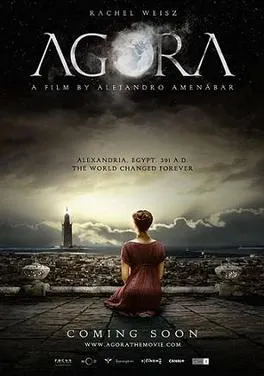Historical accuracy of Agora

Historical accuracy of Agora

Characters
Hypatia
Hypatia was a real historical figure, a renowned philosopher, astronomer, and mathematician in Alexandria. The film accurately depicts her profession and the general time period.
Orestes
Orestes was a real historical figure, the Prefect of Alexandria. The film depicts his political role, but the nuances of his relationship with Hypatia are dramatized.
Cyril of Alexandria
Cyril was a real historical figure, the Patriarch of Alexandria, and his conflict with Orestes is historically documented. However, the film simplifies and dramatizes his role in the violence and Hypatia's death.
Davus
Davus is a fictional character representing the social tensions of the time. While slavery and religious conflict were real, Davus's specific story is a dramatic device.
Ammonius
While it is known that Cyril had followers who were monks and that there were monks that engaged in violence, it is hard to say if this specific character is based on a specific historical figure. The violence itself is historically accurate.
Story
Cyril's role in Hypatia's death
The film portrays Cyril as inciting violence against Hypatia. While he opposed paganism, his direct involvement in her death is debated by historians.
Religious tensions
The film depicts the rising religious tensions and conflicts between pagans, Christians, and Jews in 4th-century Alexandria, a significant historical context.
Hypatia's pagan faith
While no definitive records confirm her beliefs, Hypatia likely adhered to Neoplatonic philosophy, often associated with pagan traditions.
Library of Alexandria
While a grand library existed in Alexandria, its destruction was a gradual process over centuries, not a single event as depicted in the film.
Hypatia's scientific work
The extent of Hypatia's astronomical discoveries is debated among historians. The film may exaggerate her contributions for dramatic effect.
Heliocentric model
The film portrays Hypatia as close to discovering the Earth revolves around the Sun. This is anachronistic, as the heliocentric model was not widely accepted until much later.
Parabolic mirrors
The film's depiction of Hypatia experimenting with parabolic mirrors has no historical evidence to support it.
Orestes' love for Hypatia
The romantic relationship between Hypatia and Orestes, the Roman prefect, is a fictional element with no basis in historical records.
Hypatia's death
While historical accounts vary in details, Hypatia was indeed brutally murdered by a Christian mob. The film captures the violence of this event.
Setting
Setting in Alexandria
The film accurately places Hypatia in Alexandria, Egypt, a major center of learning and culture in the Roman Empire.
Focus on social unrest
The film effectively captures the turbulent social and religious atmosphere of Alexandria during the late 4th and early 5th centuries.
Visual depiction of Alexandria
The film's sets and costumes create a visually convincing representation of Roman-era Alexandria.
Exploration of philosophical ideas
While the film touches on philosophical debates, it simplifies complex ideas for a broader audience, potentially sacrificing some accuracy.
